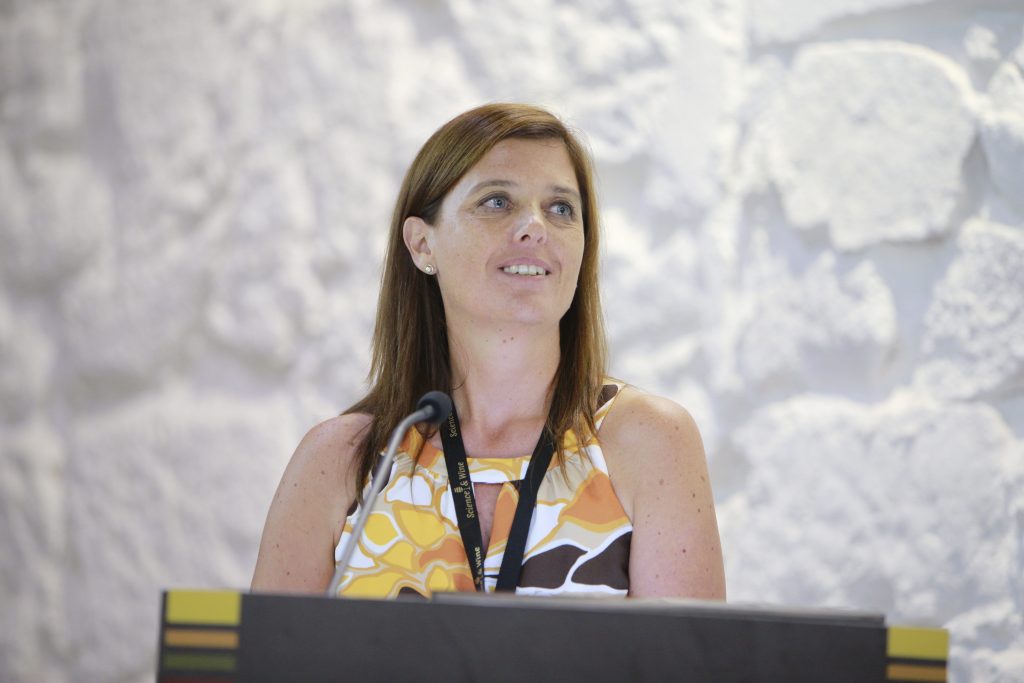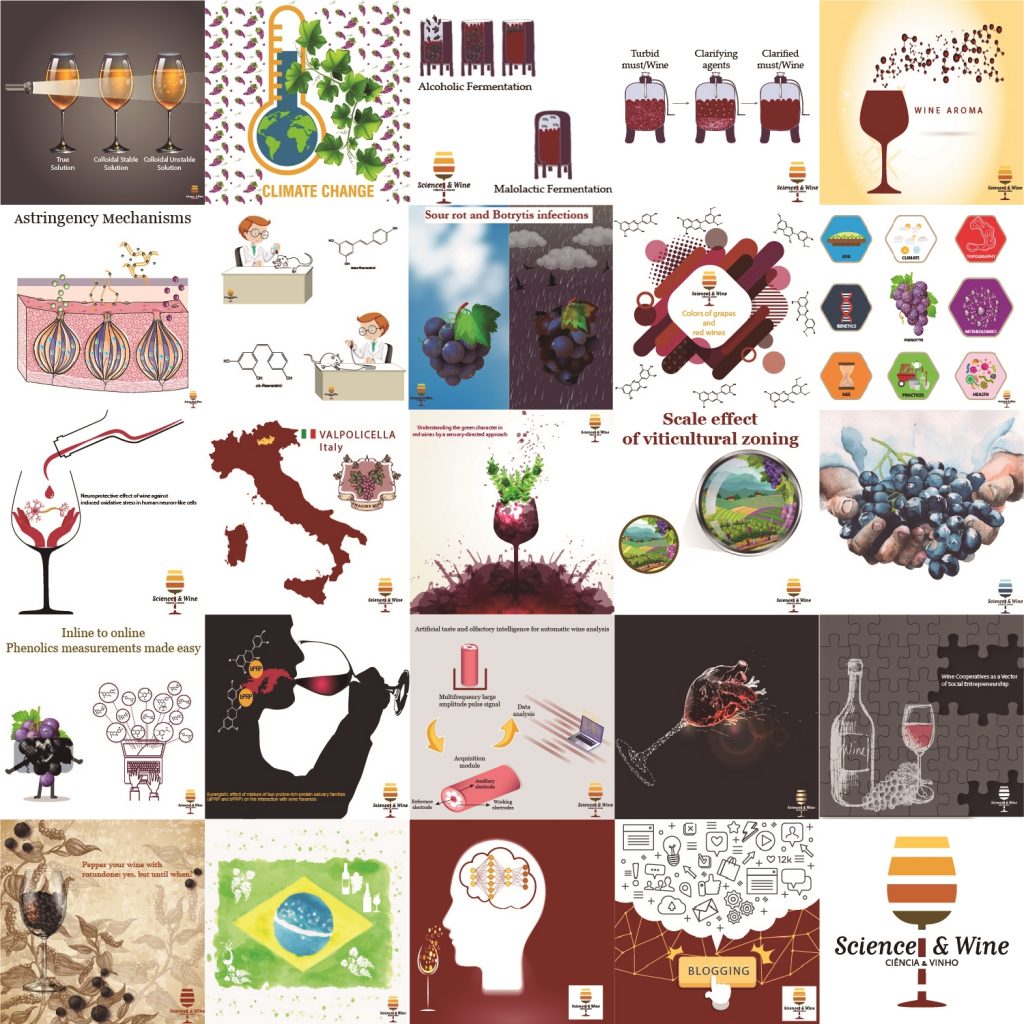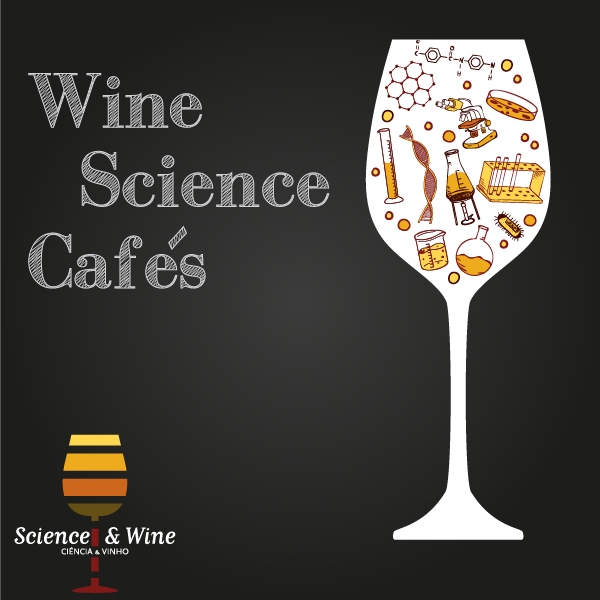By Paula Silva
My name is Paula Silva and I am the responsible of Science & Wine blog, I want to thank you for following the blog and subscribe its philosophy. Last week, in the end of Web Summit 2018, you said that it is your intent to promote a Wine Summit, being Douro Region (Portugal) one of the possible locations to do it. You cannot imagine the happiness that I felt to hear you! In past years I was feeling like Don Quixote trying to create opportunities to researchers share their ideas, scientific concepts and discovers regarding wine. Encouraged by your declarations, I decided that the post of this week must be about science communication, which is very important to wine science. Therefore, in the following paragraphs I will try to summarize Science & Wine project and its contribution to science communication.
At 10 of September of 2017 occurred in Porto (Portugal) the “Science & Wine: From the terroir to the glass” conference. As the name indicates, it was a 1-day conference dedicated to a multidisciplinary discussion regarding wine. In the event were present more than 150 attendees from different groups including politicians, scientists, oenologists, agronomic engineers, students, managers among others.

Inspired by this meeting Science & Wine blog was born in 22 of January of 2018, and publish articles about any issue related with wine, with a weekly periodicidy (Sundays). Until now, 48 posts were published with the contribution of several generous researchers with high scientific curriculums. Several topics were already approached including: the impact of climate warming in viticulture, wine and human health, precision viticulture, wine metabolome, wine microbiology, wine tasting, terroir, and wine technology. Science & Wine aims to make wine scientific data more accessible, therefore is a blog open to non-specialists and to anyone interested in the various aspects of wine science, even if it is someone not belonging to any scientific community. Creation of Science & Wine blog challenge me to venturing out of the science communication comfort zone into uncertain territory: the field where knowledge is applied.

The success of both conference and blog, and the support of our followers, made me to believe that it is possible to do more and better. Then the 1st Science & Wine World Congress is being organized, which will take place 8-10 May 2019 in Alfândega Congress Centre in Porto. This event aims to bring together the experience of experts from industry, academia, research institutions, service providers, regulatory agencies and policy makers and design the wine that will be consumed in the future. To do this, it is important to understand how new technological advances could be used towards to wine production increase and wine quality improvement. Wine authenticity, wine health effects and sustainable practices of wine production are issues considered by consumers in their purchasing processes, therefore it is also important to discuss them when designing the wine of the future. This kind of conferences are good opportunities to scientists transform their energy and enthusiasm for passing on scientific information to the public.
In January of 2019 will begin Wine Science Cafés that will happen in the last Thursday of each month. They will star in Portologia in Porto under the subject “The chemistry of Port Wine”. In February our host will be “Casa de Pasto Chaxoila” in Vila Real, then Wine Science Cafés will travel from Portugal to the world. These events will start with a short talk, approximately 30 minutes, by an “expert” and after a break will come an hour or so of discussion, questions, comments, thoughts and opinions among speaker(s) and audience. This will be a great opportunity to engage in a two-way communication, where scientists can share new evidences, techniques, and applications but also will be aware of public expectations and concerns. This way, the scientific community could take up a more responsible role contributing to the success of future society, and along the way scientists and the rest of society can learn from each other. Wine Science Cafés will democratize science, meaning that science can also be participating and open in addition to being rigorous.

As a scientist and regarding science communication, I think that the relevant question is no longer if scientists should communicate but rather how to do so effectively both with each other and with public. Science communication initiatives differ widely in terms of target audience, mode of delivery, and overall aims and ideas. Scientists can go beyond face-to-face communication, through sharing resources and online approaches and, ultimately, forming networks of science communication where resources and knowledge can be distributed. In wine sciences, is crucial to improve the standing of fundamental research in society, and this is where we as individuals, but also media, societies or other organisations, can play a key part in helping to communicate and develop this important field. I hope that Science & Wine projects provide a motivation for this development, and that people feel encouraged to communicate their science effectively and inspired to collaborate with others to develop interdisciplinary partnerships that address both scientific and societal requests effectively.
So dear Paddy Cosgrave, welcome to the challenge of wine science communication. After your declaration I believe that scientists, politicians, industry and trade people, oenologists, viticulture and oenology experts, economists and many, many others are now more excited regarding wine issues. I hope that from now on Science & Wine could be recognized as a pioneer project and can count with more followers and with more support. So, I finish this letter as I began it, thank you Paddy Cosgrave.

